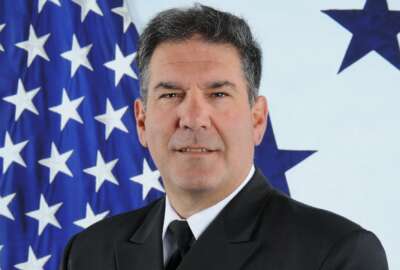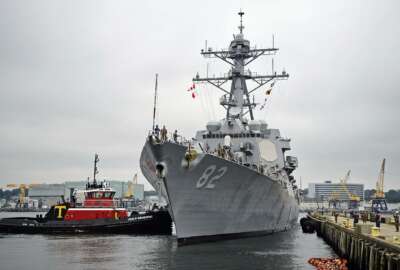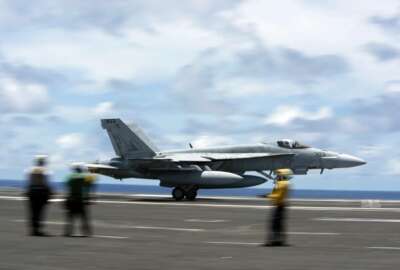New Navy approach to supply chain elevates data-driven decisions to C-suite
In the first of multiple waves yet to be implemented under a new reform plan, the Navy has saved or avoided more than $400 million in costs by taking a more...
Last October, when the Navy began its latest effort to examine its vast supply and logistics enterprise, officials realized they had what was, in essence, a too-many-cooks-in-the-galley problem.
Key decisions like what types and how many parts to order and stock were being made in a fairly disconnected and uncoordinated way. And it was hard to know whether any of those decisions was particularly wise, since there was no real mechanism to measure the return on investment for any one of those spending decisions.
In the span of less than a year, a new initiative called Naval Sustainment System-Supply (NSS-S) has made a measurable dent in those problems. So far, officials believe the total cost savings and avoidances they’ve gained from NSS-S is about $400 million, largely by realigning the service’s maintenance spending in ways that reduce unneeded orders and putting those dollars toward things that can be empirically shown to increase Navy readiness.
As one way to gather that empirical evidence, the Navy assigned cash values to what it’s worth to have a fully-capable weapons system — an F/A-18, for example — compared to having it stuck on the ground. With that as a starting point, officials can “monetize” the value of readiness — compared against the actual supply chain costs that went into getting a particular airplane ready to fly.
“What it allows us to do is make very deliberate decisions, and understand that if we put another dollar into the force generation side of the equation, what we’re going to see on the value of the readiness side,” Rear Adm. Peter Stamatopoulos, the commander of Naval Supply Systems Command (NAVSUP) said in an interview for Federal News Network’s On DoD. “In the past, that was very difficult for us to analyze. Everybody would often say, ‘What’s the return on investment?’ But we really didn’t have a formula to help us do that. That’s exactly what our Supply Effectiveness Figure of Merit (SEFoM) does.”
Stamatopoulos said the current goal is to increase that SEFoM figure by about 5 cents per dollar invested in the Navy’s supply chain over the next five years — and those nickels add up quickly in a supply enterprise that spends billions of dollars each year.
When the project started in October, the Navy set a stretch goal of saving $400 million on unproductive readiness spending over the subsequent two years. NSS-S has already yielded $418 million in savings and cost avoidances.
Stamatopoulos said the inputs NSS-S considers when it measures the bang the Navy is getting for its readiness bucks goes well beyond parts ordering, and tries to take account of the end-to-end supply chain.
“We incorporated what we call a cost of goods sold into our formula — commercial work where we merely stroke a check to do a repair or do procurements for the parts that we need. We also looked at the organic costs … in our fleet readiness centers,” he said. “How many people do they need, and what are all the costs that go into organic repair? We also put into the equation the value of our inventory for that particular weapon system, and computed a capital charge for that. Because there are costs affiliated with holding that inventory.”
But simply gathering the data wasn’t enough to influence how the Navy actually spends its readiness dollars. To do that, the service needed a new governance structure that could take a more corporate view of its spending decisions.
So one of the first of the six “pillars” of the broader Naval Sustainment System effort has been to establish a “C-suite” forum to oversee supply chain decisions that had previously been made in a much more fragmented way. For NSS-S purposes, the C-suite is populated by the vice chief of naval operations — the Navy’s second highest-ranking officer — and other senior military and civilian leaders.
“We go through Naval Sustainment System battle rhythm events on a monthly basis with four-stars and three-stars, which is quite phenomenal considering how valuable their time is,” Stamatopoulos said. “So we have our whole of Navy, all levels of leadership — those in uniform and those within the secretariat engaged in a more coordinated, deliberate fashion to dissect these issues, to remove barriers, and to make well informed decisions, based on the data.”
The overall NSS-S project still has a long way to go, Stamatopoulos said. It’s being implemented over the course of 15 “waves” over the next five years, and only the first wave has been completed. Wave two is starting now.
Beyond the $418 million cost savings, he said NAVSUP saw a 48% improvement in the turnaround time for 400 of the most important parts needed for ship repair, partly by giving industry clearer demand signals. There were similar gains for aviation parts: the 568 most important items saw a 37% reduction in turnaround time.
Stamatopoulos said NAVSUP is actively looking for more areas where lead times are long.
“We’ve actually inculcated across the whole of Navy the idea that we need to embrace the red — don’t shy away from the red — find the problems, and then let’s go out together and solve them,” he said. “Think about an end-to-end supply chain. If you have a repair turnaround time that in some cases exceeds 300 days before a unit turns the broken part into the system, the system has to go out and send it to a commercial vendor to repair. And if that repair turnaround time is 300-plus days, you see how we need more inventory in the system, because we have ships and aircraft squadrons operating across planet Earth. So if we can reduce that turnaround time from a 300 days down to 100 days, now that requires me to have less inventory in the system, because I have a much higher velocity.”
Copyright © 2025 Federal News Network. All rights reserved. This website is not intended for users located within the European Economic Area.
Jared Serbu is deputy editor of Federal News Network and reports on the Defense Department’s contracting, legislative, workforce and IT issues.
Follow @jserbuWFED






